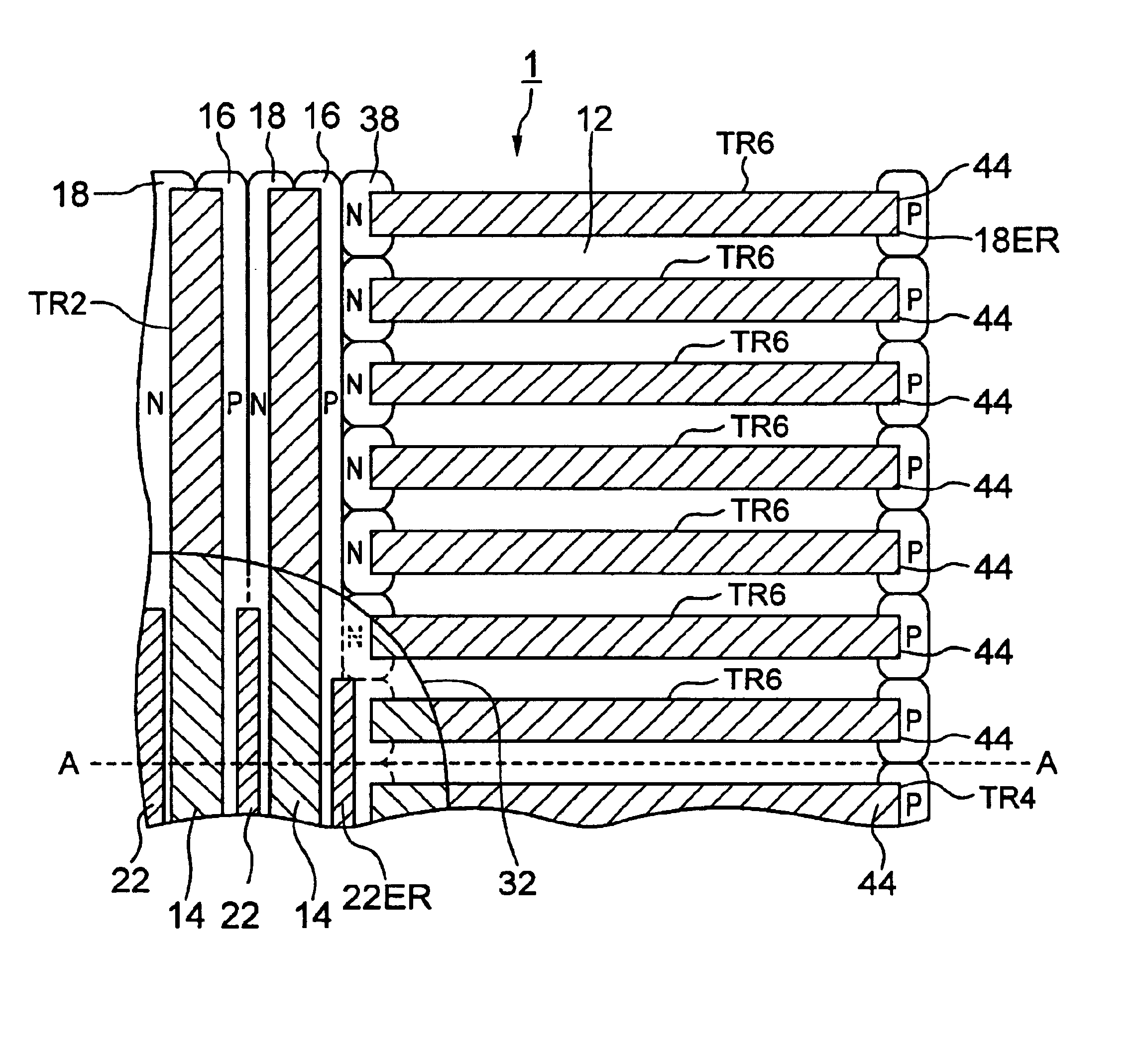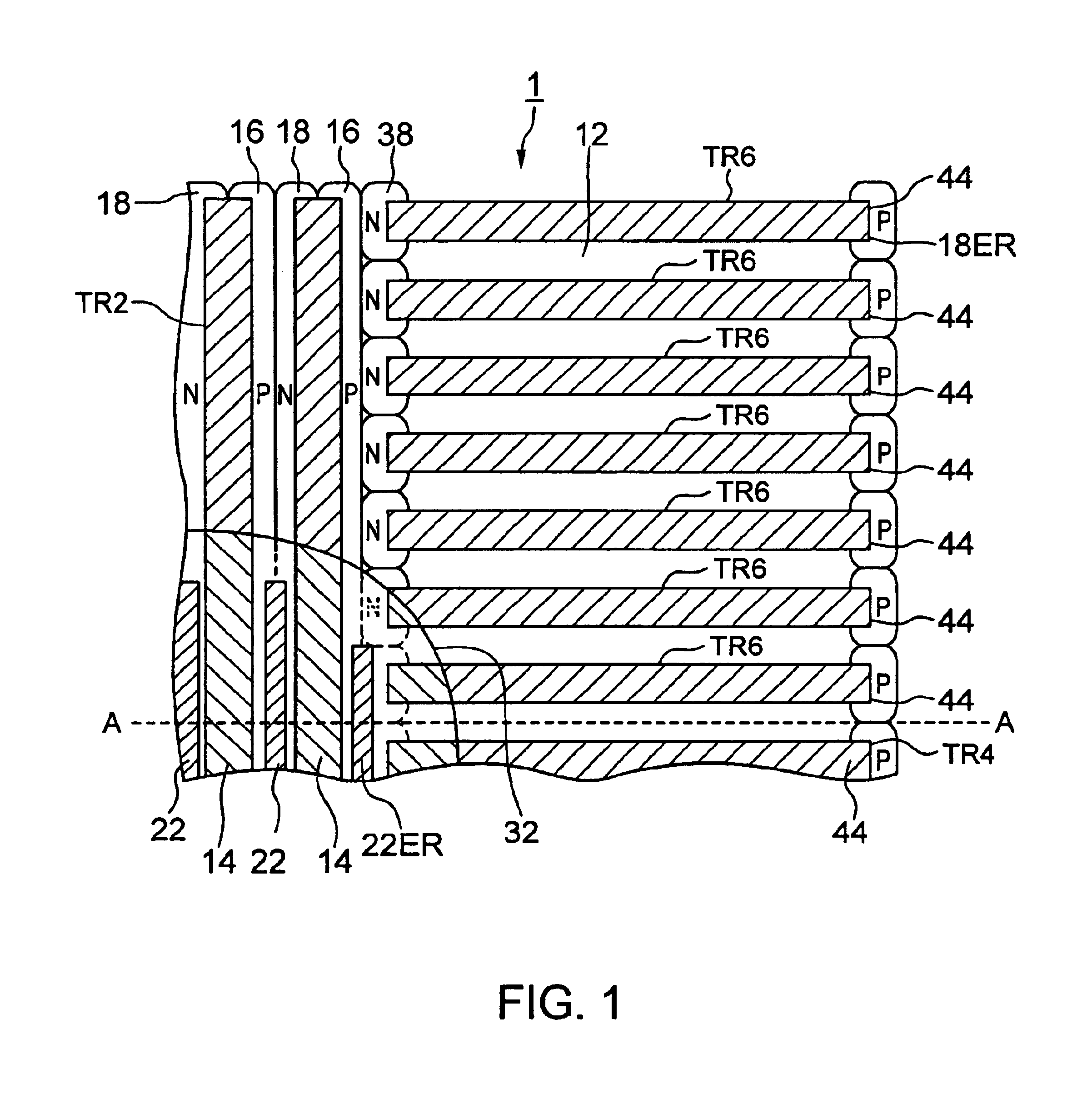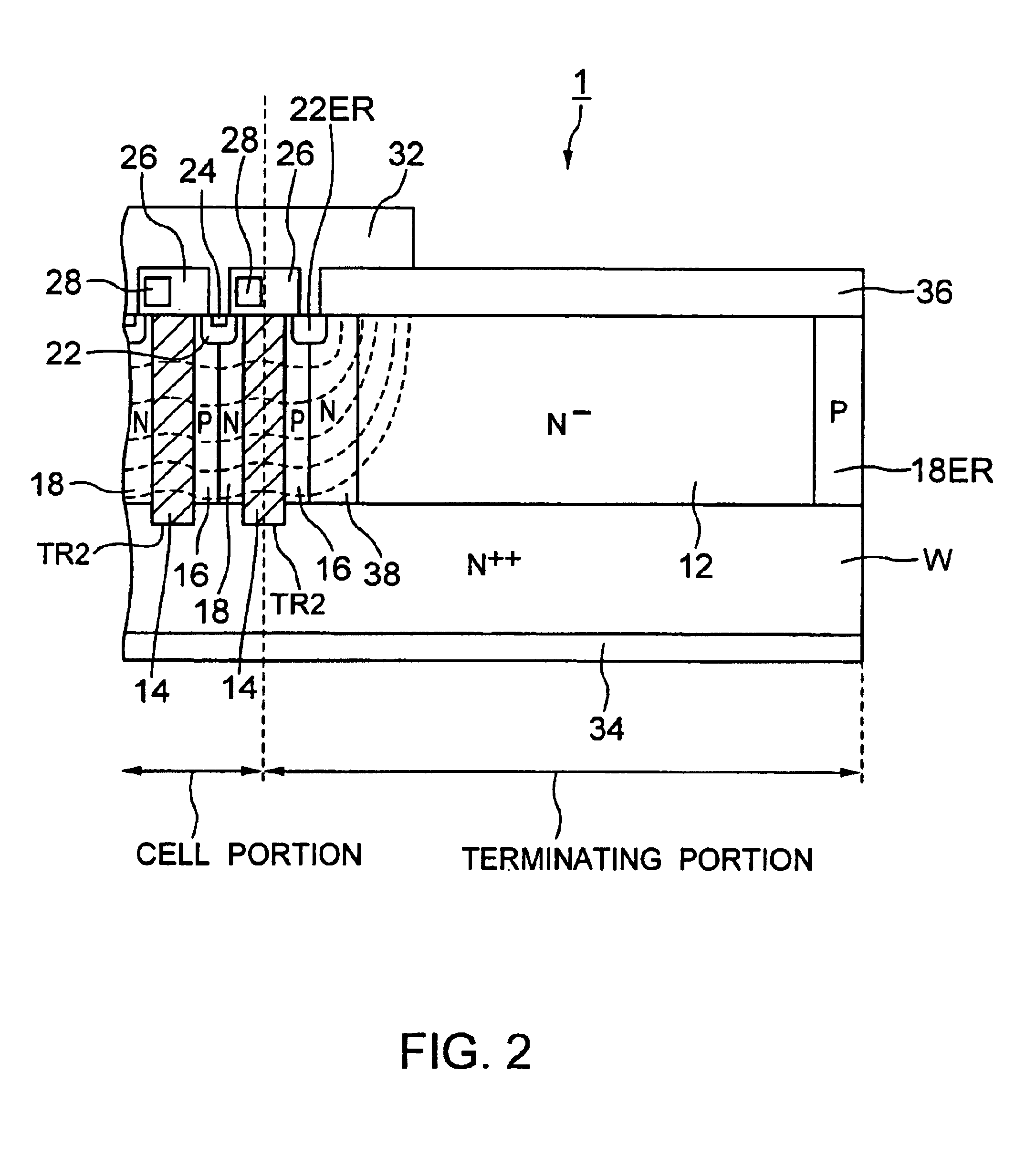Semiconductor device
a technology of semiconductors and devices, applied in the direction of semiconductor devices, basic electric elements, electrical appliances, etc., can solve the problems of increasing production costs, affecting and affecting the performance of the device, so as to achieve the effect of reducing the on-resistance of the devi
- Summary
- Abstract
- Description
- Claims
- Application Information
AI Technical Summary
Benefits of technology
Problems solved by technology
Method used
Image
Examples
first embodiment
FIG. 1 is a plan view showing one side of a terminating portion in a semiconductor device according to the present invention, and FIG. 2 is a cross-sectional view taken along line A—A in FIG. 1. FIG. 3 is a plan view showing the other side of the terminating portion of the semiconductor device shown in FIG. 1, and FIG. 4 is a cross-sectional view taken along line B—B in FIG. 3. The semiconductor device in this embodiment is characterized in that, an N layer 38 is provided on an outer side of an outermost layer of P layers 16 adjacently thereto in the terminating portion shown in FIGS. 1 and 2, and a P layer 46 is provided on an outer side of an outermost layer of N layers 18 adjacently thereto in the terminating portion shown in FIGS. 3 and 4, whereby a device has the same charge compensation structure even in its terminating portion. The semiconductor device according to this embodiment will be described in more detail below.
A power MOSFET 1 of a vertical trench multi RESURF struct...
second embodiment
Next, the semiconductor device according to the present invention will be described with reference to FIGS. 5 to 8.
FIG. 5 is a plan view showing one side of a terminating portion of the second embodiment of the semiconductor device according to the present invention, and FIG. 6 is a cross-sectional view taken along line C—C of FIG. 5. FIG. 7. is a plan view showing the opposite side of the terminating portion of the semiconductor device shown in FIG. 5, and FIG. 8 is a cross-sectional view taken along line D—D of FIG. 7. The semiconductor device according to this embodiment is characterized in that the combination of the N layer and P layer is successively formed up to the peripheral edge in the terminating portion of the device so as to have the same charge compensation structure throughout the device. A power MOSFET 3 of the vertical trench multi RESURF structure according to this embodiment is formed, in order to obtain such a charge compensation structure, so that trenches TR8 i...
PUM
 Login to View More
Login to View More Abstract
Description
Claims
Application Information
 Login to View More
Login to View More - R&D
- Intellectual Property
- Life Sciences
- Materials
- Tech Scout
- Unparalleled Data Quality
- Higher Quality Content
- 60% Fewer Hallucinations
Browse by: Latest US Patents, China's latest patents, Technical Efficacy Thesaurus, Application Domain, Technology Topic, Popular Technical Reports.
© 2025 PatSnap. All rights reserved.Legal|Privacy policy|Modern Slavery Act Transparency Statement|Sitemap|About US| Contact US: help@patsnap.com



